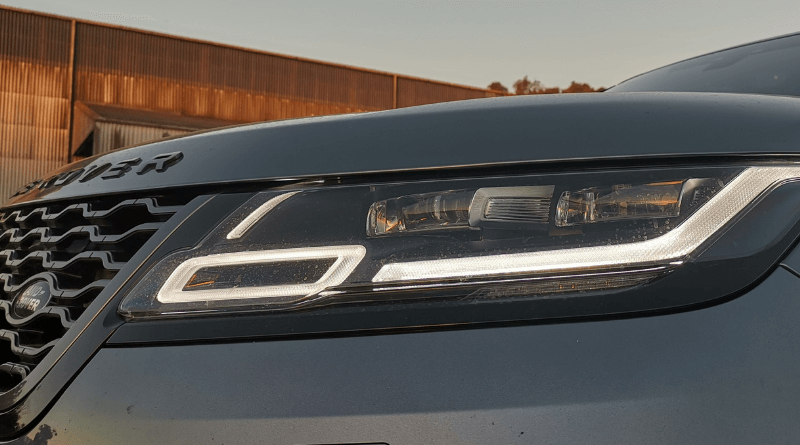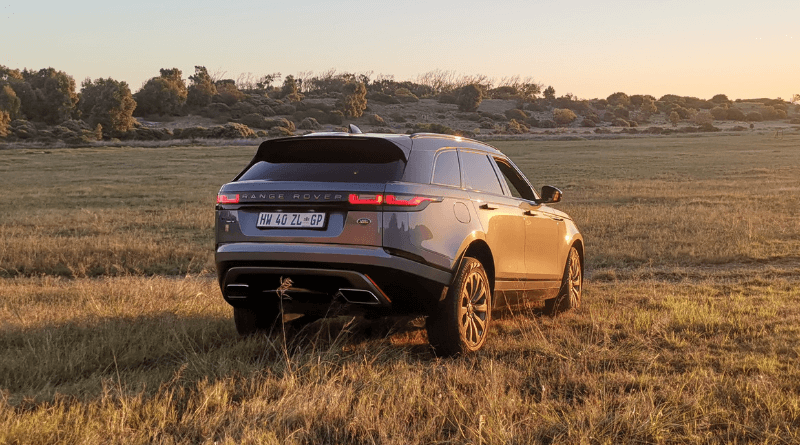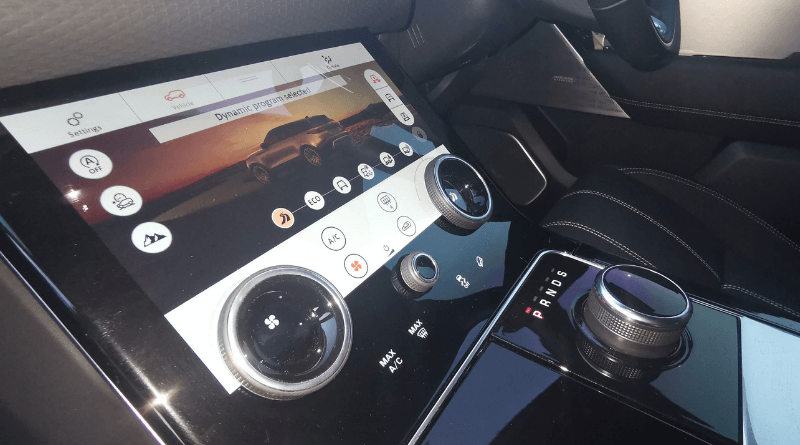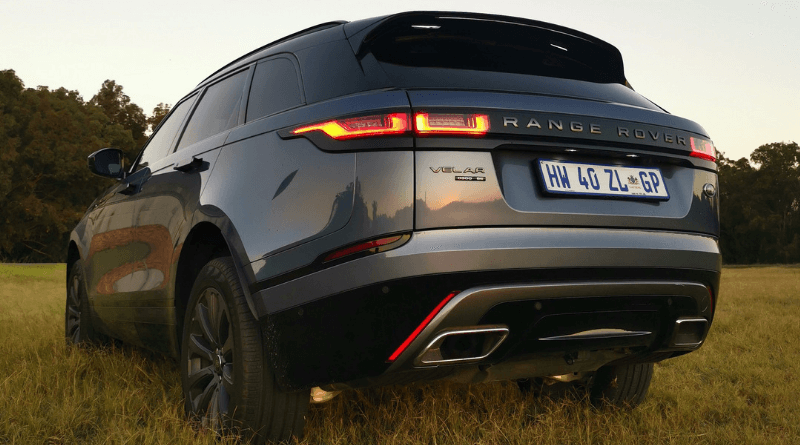When Range Rover launched their all-new Velar over the course of 2017, the motoring world sat up in anticipation for this beautiful vehicle. It was so artistically beautiful, in fact, that the South African launch included a visit to an art or sculpture museum in Stellenbosch.
The British marque had high hopes for this new SUV and were they not shy to endow the vehicle with everything synonymous with the word ‘beautiful’. A total of 65 (!!) models comprise the Velar range and are the options on which model to choose virtually endless. Each model is specified with just enough to warrant its name and rank on the hierarchy, and each vehicle has a price tag to match. It’s not cheap, this Velar, but people want it. And therein lies its recipe for success: it’s a want rather than a need. It’s about being different and flaunting your bank account at whoever wants to look at this SUV.
The Velar D300 R-Dynamic SE retails for R1.3-million and though it is impressive, it is not without faults. For the price one would expect a certain amount of value – which you get – but the overall impression leaves you wondering and pondering if perhaps you aren’t being nixed out of a few pennies…

Range Rover Sport, anyone?
One can be forgiven for thinking that the Velar is an entirely new vehicle with its own architecture and underpinnings, but the truth of the matter is that it rides on the same platform as the Range Rover Sport. There is nothing wrong with it as such, but the Velar would have benefitted greatly from standing on its own feet.
The RR Sport is a heavy vehicle and though the Velar is lighter than its bigger brother (1 959kg vs. 2 178kg), it struggles to hide its size; despite being lighter. The underpinning on which the Velar rides is a few years old and does it fall short of what its competitors over in Germany managed to conjure the last couple of years. Part of the Velar’s trouble is a front half that is quite heavy and prone to nosediving when you hit the brakes hard. It’s not too unsettling and will most drivers not explore the vehicle beyond that point, but the Velar’s rivals settle evenly when hitting the brakes. They don’t duck for cover.
What I can appreciate about the Velar, however, is that it has a humongous amount of street cred. It has a presence not many vehicles can match and it demands respect on the road. Road users will forget to drive, while car guards will fall over their feet to assist you out of the parking bay (no really, it happened a lot!). The Range Rover Velar’s size is one of its biggest attributes and does the vehicle not apologise for what it is. Its sheer size and aura are aspects not many vehicles in the market can compete with.

Is that all?!
When you’re paying this kind of money for a vehicle, you want a certain amount of standard specification added as standard. The prestige of owning/driving a Range Rover is impressive on its own, but the specification that accompanies the SUV counts for something, too. In a range comprising 65 models, it’s bound to happen that some derivatives will be specified less comprehensive than others. Like this D300 R-Dynamic SE.
From the outside the vehicle looks impressive and does it create the impression of a wholly specced vehicle. But truth be told… it’s not. When looking at this SUV in its basic form, there’s not much to warrant it. Features you’d think come standard at this price range such as blind spot alert, lane keep assist, and heated and ventilated front seats are optionally available. The features the vehicle was specified with – like the sliding panoramic sunroof (R25 400), the suede-cloth seats (R81 200), and Terrain Response 2 with Dynamic Program (R10 500) – are but a few of the optional extras added to the package. Customers are encouraged to tick off a couple of extras on the options list.
It’s a fine line between giving customers a range of options when it comes to the model range and not giving them the most for their money. Is a vast range consisting 65 models really necessary? From a marketing perspective, perhaps. But what about giving the buyer the best value-for-money possible? And it’s not just Land Rover (Range Rover’s parent company) that’s doing this; almost all premium manufacturers give you the less for more money. But wouldn’t a model range comprising fewer models add to that value-for-money prospect? Like Jaguar’s XJ range.
Just to be clear, though, the Velar’s interior is damn impressive and, optional extras aside, it does feel premium and plush. One can see and feel the attention to detail and is there enough bullets in the barrel to have shots on target.

Lunging forward
As mentioned, the Velar is quite a heavy vehicle and would it require a big, strong engine to haul the vehicle around. That’s why Range Rover employs a turbocharged 3.0-litre V6 diesel engine under the bonnet that develops – wait for it… – 221kW and a whopping 700Nm of torque! Though that torque is available at a lowly 1 500rpm, there is a fair amount of lag before the turbo kicks in. And when it kicks in, the Velar lunges forward without letting up. It can be intoxicating, but the turbo lag is not.
The Velar boasts with a number of driving modes to choose from, including Dynamic, Eco, and Comfort, but Comfort provided the best balance in terms of ride comfort and engine responsiveness. Steering feedback is also more than adequate in Comfort, but leans towards lightness when in Dynamic. There is an amount of body roll when trying to weave together a sequence of turns at speeds, but solitary sweeping bends do nothing to deter the vehicle.
Ride height is rated at 213mm, but with the optional air suspension it raises to 251mm. Air suspension comes in especially handy when driving on a bit of gravel or needing to reach your destination on the other side of a (very) mildly rocky path, but it does more than its part to absorb bumps and uneven surfaces in neighbourhood.
Range Rover claims that the Velar D300 R-Dynamic SE will reach 100km/h from standstill in 6.5 seconds and a top speed of 241km/h (not tested). Average fuel consumption is rated at 6.4 L/100km, but after lots of considerate driving the best we could muster was 8.4 L/100km. Theoretically, based on Range Rover’s figures, one should see a fuel range of 1 031km, but we managed around 320km on half a tank of diesel and the remaining range sitting on 280km.

Summary
It’s easy to assume that the Range Rover Velar D300 R-Dynamic SE has much going against it, but the truth of the matter is that Range Rover’s targeted buyer will not care much about the mentioned gripes. This is a consumer who buys into exclusivity and who wants to be different to the norm. And in that regard the Velar does serve its purpose. It does create the platform for you, as the buyer, to express yourself to your heart’s content.
Logically the Velar D300 R-Dynamic SE does have its shortcomings, but in the grander scheme of things it remains an impressive vehicle.